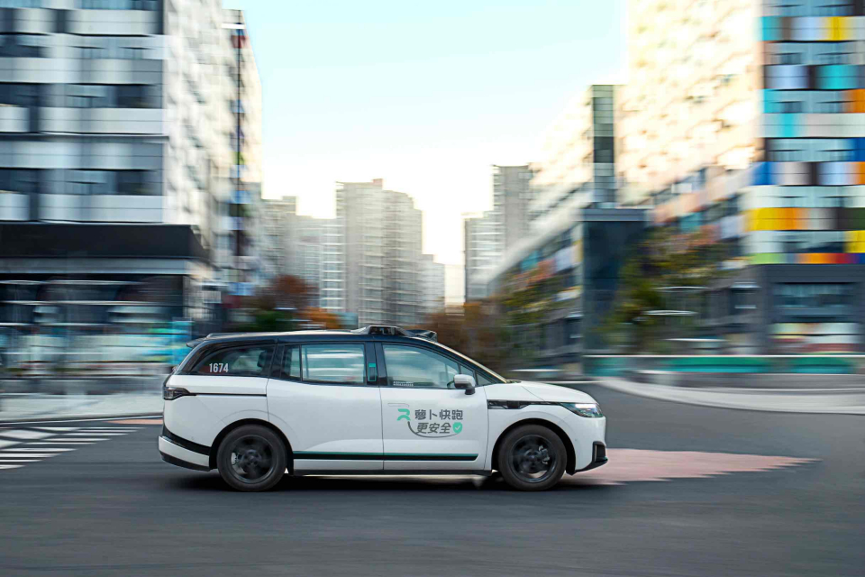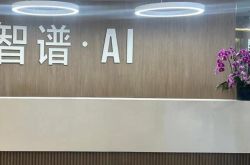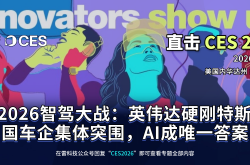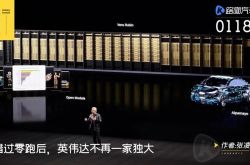Tesla's Robotaxi Garners Praise, Yet Lobo Quickride Deserves More Acclaim|Automotive Circle
![]() 06/27 2025
06/27 2025
![]() 621
621
 Amidst rapid advancements in new energy, autonomous driving, artificial intelligence, and chip technology, the automotive industry is undergoing unprecedented transformations. LingTai LT, staying abreast of the latest industry developments and analyzing market trends, introduces the "Automotive Circle" column. This column focuses on global automotive advancements, new product launches, technological innovations, and key automakers' market performances from a professional lens. Through in-depth industry insights, it reveals the underlying business logic and market rules, exploring how these shifts reshape the automotive landscape and impact human travel. This article, the 20th in the series, highlights how Lobo Quickride represents Chinese enterprises in the global autonomous driving market, competing with Tesla and Waymo.
Amidst rapid advancements in new energy, autonomous driving, artificial intelligence, and chip technology, the automotive industry is undergoing unprecedented transformations. LingTai LT, staying abreast of the latest industry developments and analyzing market trends, introduces the "Automotive Circle" column. This column focuses on global automotive advancements, new product launches, technological innovations, and key automakers' market performances from a professional lens. Through in-depth industry insights, it reveals the underlying business logic and market rules, exploring how these shifts reshape the automotive landscape and impact human travel. This article, the 20th in the series, highlights how Lobo Quickride represents Chinese enterprises in the global autonomous driving market, competing with Tesla and Waymo.
Author|Anyu
Editor|Hu Zhanjia
Operation|Chen Jiahui
Produced by|LingTai LT (ID: LingTai_LT)
Title image|Publicly available image on the internet
The implementation of Robotaxi services is accelerating.
On June 22, 2025, Eastern Time, Tesla officially launched a Robotaxi pilot service in Austin, Texas, USA. Passengers can ride the Robotaxi for a fixed fee of $4.20. Elon Musk, Tesla's CEO, tweeted, "Congratulations to the Tesla AI software and chip design team for successfully launching the autonomous driving taxi, the culmination of a decade's hard work. Both teams were built from scratch within Tesla."
Tesla isn't alone in this endeavor. Platforms like Lobo Quickride and Waymo have also accelerated the maturity of their Robotaxi services. Bloomberg reported on June 20 that Lobo Quickride is expanding its footprint in Southeast Asia, with plans to launch Robotaxi services in Singapore and Malaysia this year.
Coincidentally, Waymo announced it will enter New York for testing next month and plans to roll out Robotaxi services in Atlanta, Miami, and Washington, D.C. in the future.
These developments signal a global Robotaxi competition forming a "Big Three" rivalry between American Tesla, Waymo, and Chinese Lobo Quickride. In this race for autonomous driving supremacy, the window of opportunity is fleeting, and Chinese players must advance to avoid falling behind.

The competition in autonomous driving is fundamentally an AI battle. While Lobo Quickride has secured a first-mover advantage, Waymo and Tesla cannot be underestimated. Crucially, Waymo and Tesla are rapidly advancing with American policy support. For Chinese enterprises to maintain their autonomous driving leadership and stand tall in the global AI and autonomous driving industry, policy and public support are indispensable.
The ultimate travel solution: Accelerated global implementation of Robotaxi
Since ChatGPT's advent in November 2022, many AI verticals have hit the "accelerate button." However, most AI businesses struggle with commercialization. In contrast, Robotaxi, leveraging large vision models, boasts significant commercial potential due to its mature landing scenarios and user needs.
In Yuval Noah Harari's 2015 book "Sapiens: A Brief History of Humankind," he predicted that as autonomous driving technology matures, private cars may vanish like carriages, replaced by all-weather Robotaxis catering to diverse travel needs due to high private car idleness and driver risks.
With higher vehicle utilization efficiency and safety than human drivers, the Robotaxi industry is poised for growth. A Goldman Sachs report forecasts the global Robotaxi market to reach $40 billion to $45.7 billion by 2030, with a compound annual growth rate exceeding 60%.
NVIDIA CEO Jensen Huang echoed this at the Viva Tech conference in Paris mid-June, stating, "The next decade will be the era of autonomous vehicles (AVs), robots, and autonomous machines."
Recognizing Robotaxi's huge commercial value, many countries and regions are accelerating legislative processes and policy support systems to propel Robotaxi implementation.
For instance, in 2017, Singapore amended its Road Traffic Act to allow autonomous vehicle testing on public roads. Similarly, Mattar Al Tayer, Dubai's Infrastructure, Urban Planning, and Quality of Life Commissioner-General and Dubai Roads and Transport Authority Director-General, stated in February 2024 that Dubai aims to implement an autonomous transportation strategy, with 25% of travel demand handled by Robotaxis by 2030.
As the China-U.S. technological rivalry intensifies, the party pioneering the entire industry chain's closed loop and building a complete ecosystem will set the rules and dominate technology product output. Strategically, this is a crucial battle neither China nor the U.S. can afford to lose. The core focus of global Robotaxi competition now lies in China and the U.S., countries with the highest concentration of autonomous driving enterprises, and their policy support for autonomous driving.
American policies strongly back Tesla and Waymo's "foreign radishes"
The global Robotaxi head competition is shaping up, with fierce rivalry between American Tesla and Waymo and Chinese Lobo Quickride. While Robotaxi frontrunners have emerged, the industry is nascent, and a winner remains undetermined. Policy attitudes significantly influence the Robotaxi industry's development and global landscape.
It's no exaggeration that autonomous driving's development hinges not just on technical competition but also on policy and regulatory support.
Public information shows Texas is among the 18 states with autonomous vehicle-related legislation. Local laws require autonomous vehicles to be registered and insured, with no prior approval: Texas Senator Kelly Hancock stated that the 2017 autonomous driving legislation aims to foster industry development in a competitive market, avoiding entry barriers.
Europe is also accelerating policy-level autonomous driving dividends. The UK's "Automated and Electric Vehicles Act" came into effect, paving the way for autonomous vehicles on roads by 2026. Uber also announced a pilot project with British autonomous driving company Wayve for UK travel services in spring 2026, furthering autonomous driving commercialization and application.
Austin, where Tesla conducts its test, is in Texas, an "autonomous vehicle-friendly state" allowing multiple companies, including Tesla and Google Waymo, to lead operations. Texas even has a law deeming it illegal for any local government to "restrict autonomous vehicle operations."
Thanks to the autonomous driving policy environment's laxness, companies like Tesla and Waymo swiftly advance Robotaxi research, development, and implementation.
For instance, Musk set a timeline for Tesla's Robotaxi service expansion. Within months of Austin's pilot, the Tesla Robotaxi fleet will grow to 1,000 vehicles. By 2026's end, over 100,000 Tesla Robotaxis are expected to operate in the U.S. market.
Similarly, Shwetashrivastava, Waymo's Senior Director of Products and Strategy, praised Austin, Texas, saying, "We examined the operating structure's and regulatory environment's friendliness. This city is at the technology forefront - very open to welcoming and adopting new technologies, which is great."
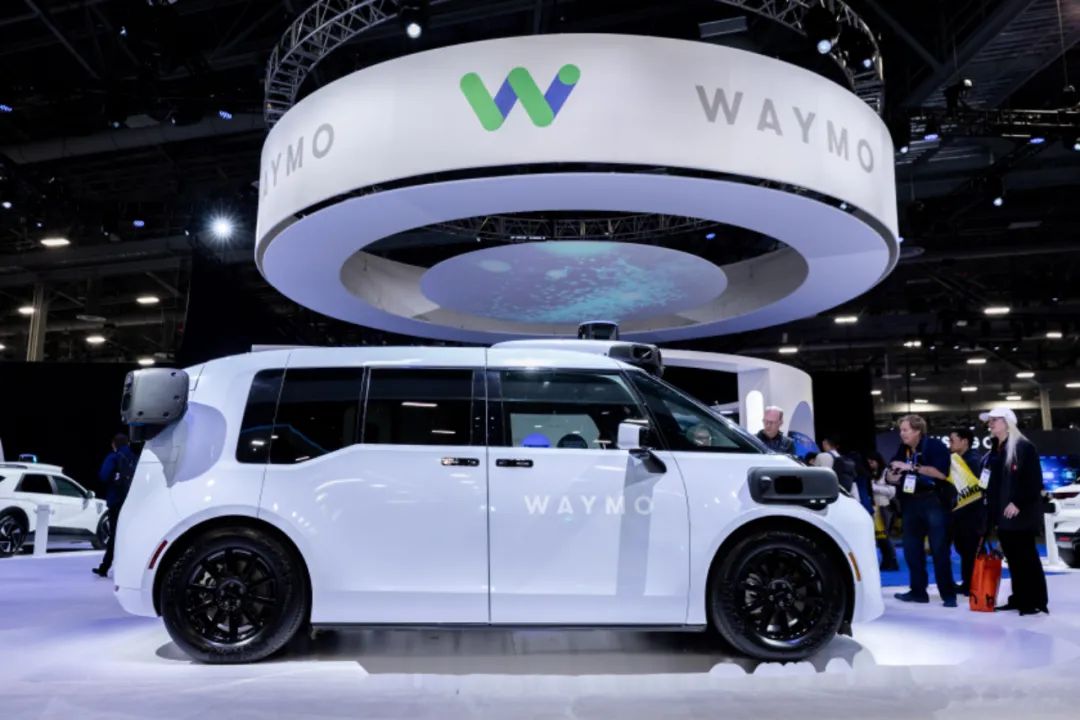
Clearly, Texas's push for Tesla and Waymo's Robotaxi implementation underscores policy environment's crucial guiding role in technological innovation. Technological breakthroughs need policy coordination as support. Only by clarifying legal boundaries can enterprises' innovation vitality and landing confidence be truly stimulated, accelerating new technology development and application.
This policy and even public encouragement and support are crucial for Lobo Quickride and China's autonomous driving global competition.
Chinese and American autonomous driving "race cars": "Native radishes" seek policy and social support
According to Tianyancha media, Tesla's current Robotaxi service isn't based on the steering wheel-less Cybercab but on the FSD-equipped Model Y. However, the Model Y uses a pure vision solution, lacking multi-sensor fusion's safety redundancy, achieving only L2-level assisted driving. Thus, Tesla explicitly states that "autonomous vehicle operations will be restricted or suspended in inclement weather like rain and wind." Tesla also uses geofencing to limit Robotaxi vehicles to specific areas, with each equipped with a safety officer to handle emergencies.
Despite this, Tesla garnered widespread praise online, with platforms at home and abroad flooding with cheers of "technology's light" and "the future has arrived," as if humanity's tomorrow rests in Musk's hands.
In contrast, Lobo Quickride, with its extreme safety, has already entered many countries or regions, landing in 15 global cities. The Wall Street Journal reported that Lobo Quickride will venture into Switzerland and Turkey. Notably, Switzerland, renowned for its stringent traffic and safety regulations, is globally recognized for testing autonomous driving technology and safety. Lobo Quickride's Swiss landing indicates its safety system meets top-tier global standards.
Overseas, Lobo Quickride's technology and safety have been praised by many media and netizens. Many American netizens posted on social media that China has been implementing fully autonomous Robotaxis since 2022, particularly Lobo Quickride, which operates freely around the clock in Wuhan. In comparison, Tesla's advantage isn't obvious. The Wall Street Journal was even more direct, stating that China's autonomous driving is at least 18 months ahead of the U.S.; Nikkei News said Lobo Quickride redefines urban transportation, while Der Spiegel believes Lobo Quickride is an "underestimated Chinese tech giant."
However, as China's ace in the global autonomous driving competition, Lobo Quickride faces domestic netizens' skepticism, a puzzling phenomenon.
In LingTai LT's (ID: LingTai_LT) view, while Tesla's Robotaxi is praised, Lobo Quickride deserves more applause!
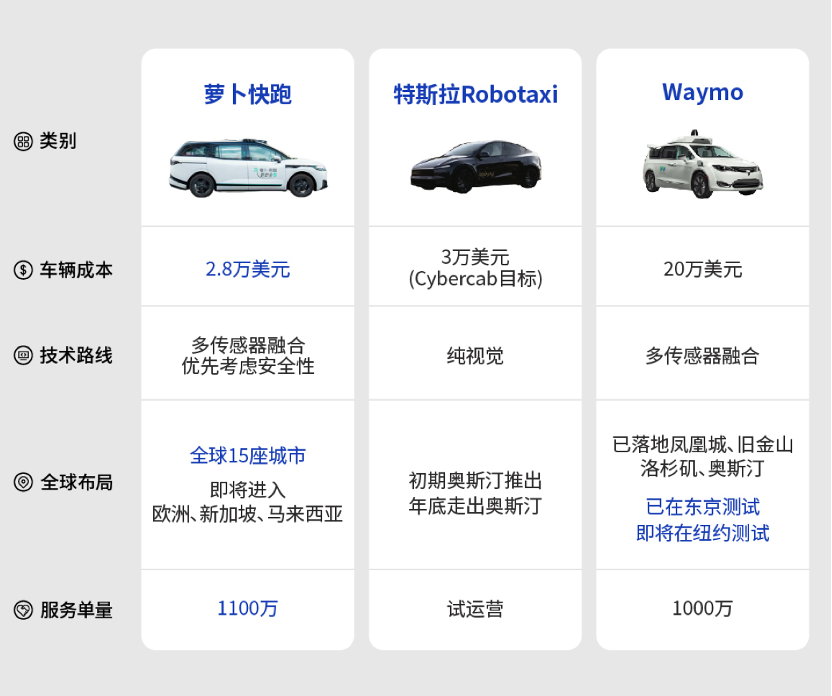
▲Figure: PK among the three major players in autonomous driving at home and abroad
Judging from the global autonomous driving "Big Three" of Lobo Quickride, Tesla, and Waymo's development in the figure above, Lobo Quickride, achieving cost control without compromising safety, demonstrates stronger comprehensive advantages over Tesla and Waymo, becoming a global Robotaxi leader. However, to win the long-term global autonomous driving competition and continue dominating the AI and autonomous driving industry, policy, legal, and social support for autonomous driving technology and large model iteration are crucial.
Professor Zhu Xichan, School of Automotive Studies and Director of the Automotive Safety Technology Research Institute at Tongji University, stated, "China and the U.S. have always been the most influential players at the global autonomous driving table. Facing Tesla and Waymo's rapid layout, Lobo Quickride may be our ace in this round... If China wants to seize the future AI competition's initiative, especially in autonomous driving, relevant departments need to provide enterprises with an open and inclusive policy environment and accelerate autonomous driving legislation. Under the 'humans and vehicles equal rights' principle, let local autonomous driving enterprises truly take off."
Beyond policy legislation, as media and the public, we should give more confidence and patience to Chinese technological innovation enterprises like Lobo Quickride, enabling "native radishes" to run faster and farther in the global market.
